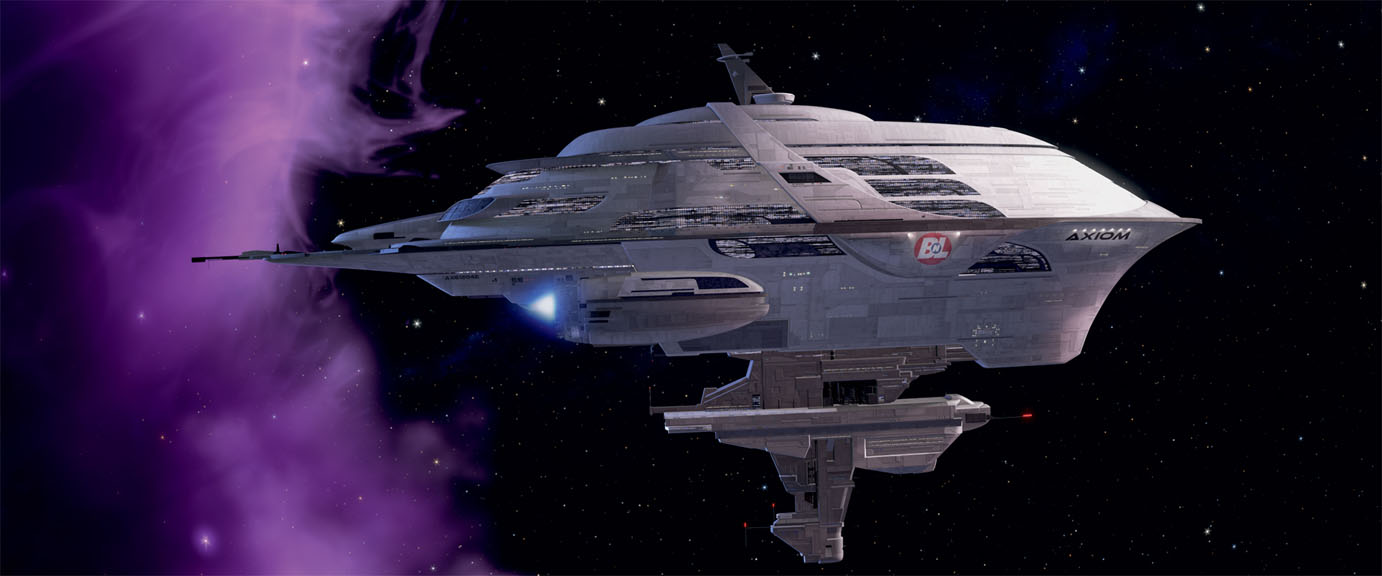

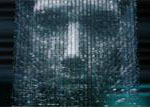 |
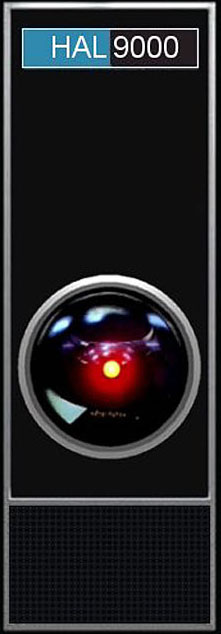 |
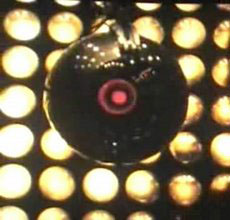 |
 |
| Figure 2 |
The iconographic images of all these representations even
simulate one another as androgynous, completely devoid of human empathy. Auto, in Wall-e, is
visually constructed to closely resemble the HAL machine in 2001: Space Odyssey. Even the way these
two machines are finally defeated are more or less the same. This discourse about these robots taking
control has created a "power...produc[ing] the world as it understands it" (Rose 143). In this case,
the discourse is one of resistance, one where the spectator is meant to see the potential threat in
the power structures created in these robots and then not allowing it to happen. All of these
representations of robot control establish a certain narrative of "cultural paranoia...that make up
a dominant reality empowered by virtue of the connections to be made between materiality...and the
fictional representations or transformations of that materiality which come to affects its
constitution" (O'Donnell 182). What we learn from these power structures or in this case, these
computers taking over, is that they delve deeply into discourse analysis II, where the "technologies
of surveillance" turn the entire world (or ship) into a "panopticon" where everyone becomes observed
and becomes the prisoner under constant scrutiny. Those under this constant scrutiny always "self-disciplining" for fear of being seen
as acting against the power structure and then potentially being punished - thus proving
"'visibility' [has become] a trap'" (Rose 174). The Axiom is the "institutional apparatus" housing
the "institutional technologies" implemented by Auto to maintain order over robots and humans alike
(Rose 174). The ship itself is the architecture of that apparatus while the video surveillance is
the technology implemented to control everything, along with the glowing lines on the ground and the
actual robot prison cells for those robots who have malfunctioned and been deemed unfit to
participate in the Axiom's hegemonic practices. Wall-e, only because he was unaware of the power
structures in effect on the Axiom and the consequences of breaking the rules, was easily able to
maneuver throughout the ship - eventually leading to the reassertion of human control and the demise
of Auto's hegemonic practices. Wall-e never followed the glowing lines, he destroyed the prison
cells and with the help of Eve he avoided the surveillance of the ship. Of course, we were able to
see the effects of Wall-e's resistance to the power structure. Labeled a "rogue robot" along with
Eve, they were pursued by the ship's hegemonic forces and only escaped complete destruction because
they removed the entire power structure in place.
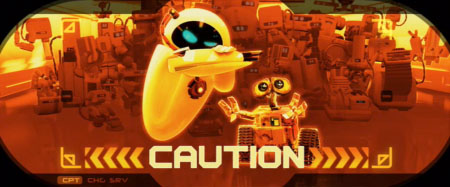 |
Still, this was not done without a price, and Wall-e suffered near humanistic erasure because he resisted Auto's power structure. In the end though , the violence inflicted upon Wall-e illustrates something import about resisting power structures, there is the potential for pain and destruction, regardless how noble the resistance may be. So, there it is, the visuality in the film Wall-e, or at least a portion of it. The subjects I touched on deserve volumes in order to make complete sense of their significance on the developing minds this film was intended for. Wall-e cycles through everything from semiotics to psychoanalysis to both types of discourse analysis. Throughout some of this I had talked about the audience and the intended position for the audience, but there is much I did not explain about audiencing for a film of this visual magnitude. Just know that Wall-e opened doors for animation and cinematography. It gave us perspective on how a science fiction romantic comedy for children can have so much impact on the ongoing discourse about human advancement and the preservation of the positive human condition. |
| Home Page | Visualizing Humanity | Watching Wall-e | The Semiotics of Hello, Dolly! | Engendering Robots | Navigating the Axiom | Bibliography | The Gallery |